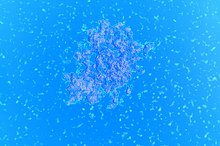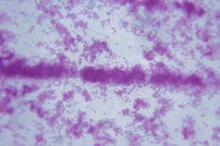How Is Enterococcus Faecalis Transmitted?
Identification and Habitat
Enterococcus faecalis is a strain of bacteria that is known as a commensal organism in the intestines 1. This means that it is normally found in the intestine, particularly the large intestine, of most human beings. Normally it is not pathogenic, which means that this bacteria, when contained within the intestines, does not typically cause any sort of disease.
If you are experiencing serious medical symptoms, seek emergency treatment immediately.
It is able to survive the high concentrations of bile within the intestines and may actually play a role in digestion as it breaks down complex carbohydrates too. Because this is an organism that typically is found in the human body, it has also over time become resistant to many common antibiotics.
- Enterococcus faecalis is a strain of bacteria that is known as a commensal organism in the intestines 1.
- Normally it is not pathogenic, which means that this bacteria, when contained within the intestines, does not typically cause any sort of disease.
Intestinal Infections
What Are the Treatments for Serratia Bacteria?
Learn More
Although Enterococcus faecalis is typically harmless, this is only true when it is living in its intestinal niche. However, because of its resistance to antibiotics, it can sometimes overgrow the intestines after a course of broad-spectrum antibiotics, leading to intestinal problems. In addition, it can cause a serious infection if the intestines become perforated and it is able to escape into the abdominal cavity, where it can spread to other organs as well as cause a massive infection. Finally, in the event that it spreads into the bloodstream, it may cause bacterial sepsis and can spread to the brain or the heart.
- Although Enterococcus faecalis is typically harmless, this is only true when it is living in its intestinal niche.
- However, because of its resistance to antibiotics, it can sometimes overgrow the intestines after a course of broad-spectrum antibiotics, leading to intestinal problems.
Secondary Infections
Enterococcus faecalis can also enter the body through wounds and by infecting catheters and other surgical implements. The most common way that it is able to enter these sites is due to improper hygiene; because it lives in the intestines, Enterococcus faecalis can be found in fecal matter. As a result it can infect the skin and gain access to sites of insertion of catheters or IVs, or "ports" for dialysis. As a result, it is important that patients with an IV, a catheter or a dialysis port keep the area clean and wash their hands thoroughly after using the restroom. Medical professionals must also make every effort to keep their hands clean when working with such patients to avoid an Enterococcus infection.
- Enterococcus faecalis can also enter the body through wounds and by infecting catheters and other surgical implements.
- As a result it can infect the skin and gain access to sites of insertion of catheters or IVs, or "ports" for dialysis.
Related Articles
References
Writer Bio
Adam Cloe has been published in various scientific journals, including the "Journal of Biochemistry." He is currently a pathology resident at the University of Chicago. Cloe holds a Bachelor of Arts in biochemistry from Boston University, a M.D. from the University of Chicago and a Ph.D. in pathology from the University of Chicago.









